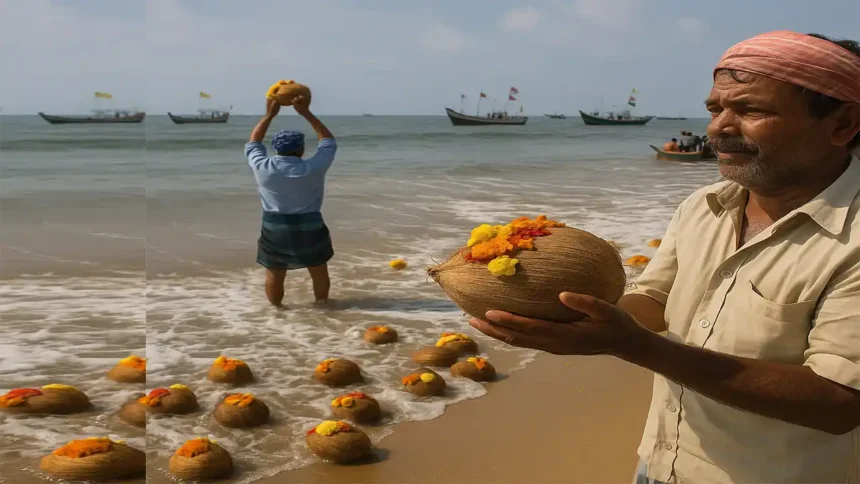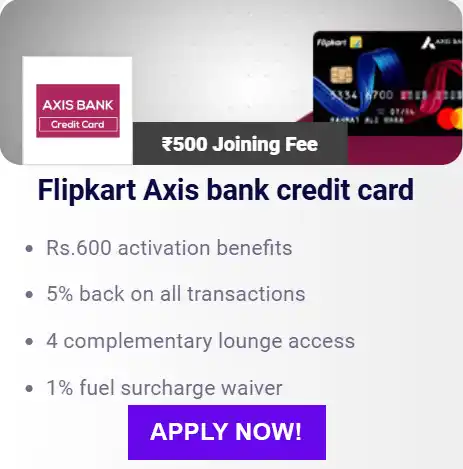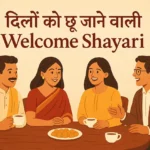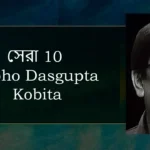Is Narali Purnima Just a Coconut Festival or Something Much Deeper? Uncover the Real Story!
India is a land of many festivals, and each one has a story, a tradition, and a cultural value behind it. One such beautiful and meaningful festival is Narali Purnima, celebrated mainly in the coastal regions of Maharashtra, Goa, Gujarat, and some parts of South India.
Narali Purnima is also known as Coconut Day or Shravan Purnima. The word Naral means coconut and Purnima means full moon. So, Narali Purnima is celebrated on the full moon day of the Shravan month (usually in July or August), which marks the end of the monsoon season and the beginning of the fishing season.
But Narali Purnima is not just about offering coconuts—it is about expressing gratitude to the sea, worshipping Lord Varuna (the God of Oceans), and seeking protection and prosperity for fishermen and their families.
The Real Meaning Behind Narali Purnima
Narali Purnima is not just a religious or cultural event. It is also deeply connected to nature, livelihood, and tradition. For centuries, fishermen have depended on the sea for their living. During the monsoon, the sea becomes rough and dangerous, so fishing activities are usually stopped.
Narali Purnima is the day when fishermen pray for a safe journey before they return to the sea. They offer coconuts to the water as a symbol of respect and a request for blessings. It is believed that offering coconuts will please Lord Varuna, who will keep them safe from storms, floods, and other dangers.
In many coastal villages, Narali Purnima is the most important festival of the year. It marks the beginning of hope, faith, and a new season of harvest from the sea.
How Narali Purnima is Celebrated
Narali Purnima is celebrated with great joy and devotion, especially in the Konkan region of Maharashtra and the coastal belt of Gujarat. The festival includes many traditional rituals, family gatherings, and tasty food.
Here’s how the celebration usually goes:
- Early Morning Bath and Puja: People wake up early and take a holy bath. They wear clean clothes and get ready for the rituals.
- Varuna Puja (Worship of the Sea God): In coastal areas, fishermen and their families gather near the sea, river, or lake. They decorate coconuts with flowers and turmeric. Then, they perform aarti and offer the coconut to the sea by letting it float.
- Decorating Boats: Fishermen clean and decorate their boats with flowers, flags, and colorful cloth. They believe it brings good luck for the new season.
- Special Coconut Dishes: Women prepare delicious dishes using coconut like Narali Bhaat (sweet coconut rice), coconut ladoos, modak, and more.
- Tying Rakhi: In some families, especially in Maharashtra, Narali Purnima is also the day of Raksha Bandhan, where sisters tie rakhi to their brothers.
- Folk Music and Dance: In fishing communities, people perform Koli dance and sing traditional songs to celebrate the day.
- Avoiding Non-Veg Food: On this day, many people eat only vegetarian food as a mark of purity and devotion.
Religious Belief and Mythology Behind Narali Purnima
According to Hindu mythology, Lord Varuna is the god of water and oceans. He is one of the oldest Vedic deities and is often shown riding a sea creature called Makara. People believe that offering coconuts into the sea pleases Varuna Dev and ensures calm waters and safe journeys.
Another belief is that Narali Purnima is also the day when Rishi Ved Vyasa, the great sage who wrote the Mahabharata, was born. That’s why some people also celebrate this day as Vyasa Purnima or Guru Purnima in different parts of India.
This day is also considered very sacred to Lord Shiva, as it falls in the holy month of Shravan, which is dedicated to Him. Devotees visit temples and offer water, milk, and coconut to the Shivalinga.
Why Coconut? The Symbolism Behind It
You might wonder, why only coconut is offered on Narali Purnima and not any other fruit? The reason lies in the deep meaning of the coconut in Indian culture.
- Sacred Fruit: Coconut is considered pure and is used in almost every Hindu ritual. It is a symbol of selfless offering.
- Represents Life and Faith: Breaking a coconut represents breaking the ego and offering one’s inner self to God.
- Grows Near the Sea: Coconuts grow mostly in coastal areas. That makes it a natural connection between people and the sea.
- Floats in Water: When thrown into the sea, coconuts float, which makes them perfect for water-based rituals.
Cultural Importance Among Koli and Fishermen Communities
The Koli community, known as the traditional fishing community in Maharashtra, celebrates Narali Purnima as a grand occasion. It is like their New Year festival. Their boats are blessed, new fishing nets are used, and everyone prays for a better season.
In many villages, the sea becomes a place of celebration. People gather in large numbers. Folk dances, drumming, and community feasts turn the beaches into cultural grounds.
It’s not just a festival—it’s their way of thanking nature, showing unity, and honoring tradition.
Scientific and Environmental Angle of Narali Purnima
While Narali Purnima is a religious festival, it also carries an important ecological message.
- Respect for the Ocean: By celebrating the sea and seeking blessings before fishing, people are taught not to take nature for granted.
- Fishing Break Helps Marine Life: During the monsoon, fishing is avoided. This break allows marine animals to breed and grow, which helps maintain the fish population.
- Seasonal Balance: The celebration acts as a reminder to follow nature’s rhythm and work with the seasons, not against them.
This traditional wisdom shows how Indian festivals often combine faith with nature conservation.
Famous Places Where Narali Purnima is Celebrated
- Mumbai – Girgaum Chowpatty and Juhu Beach are filled with people celebrating and offering coconuts to the sea.
- Konkan Region – Villages like Ratnagiri, Alibaug, and Sindhudurg see colorful boat processions and folk dances.
- Goa – Narali Purnima mixes with local Goan customs. Coconuts are offered in rivers and people prepare seafood feasts.
- Gujarat Coast – Fishermen communities in Daman and coastal Gujarat celebrate with boat pujas and fairs.
- Tamil Nadu & Kerala – Though not commonly called Narali Purnima, some communities perform similar sea worship during Shravan Purnima.
Modern Celebrations and Changing Traditions
In recent years, Narali Purnima is not only celebrated in villages but also in cities. Schools and cultural groups organize programs to educate children about the festival’s meaning.
In urban areas, people may not go to the sea, but they offer coconuts in temples or perform symbolic rituals at home. Social media is also playing a role in keeping the tradition alive, as people post pictures, videos, and stories about how they celebrate.
However, some challenges are emerging too:
- Pollution: Throwing decorated coconuts, plastic, or synthetic flowers into the sea can pollute water.
- Loss of Tradition: Younger generations in cities may forget the meaning behind the rituals.
That’s why many groups are promoting eco-friendly Narali Purnima, where people use natural decorations, and remove non-biodegradable items after the puja.
Delicious Narali Purnima Recipes
Narali Purnima is also a food lover’s delight, especially for those who enjoy coconut-based dishes. Here are some popular dishes:
- Narali Bhaat: Sweet coconut rice cooked with jaggery, cardamom, and ghee.
- Coconut Modak: Dumplings made with coconut and jaggery stuffing.
- Sol Kadhi: A refreshing pink-colored drink made with coconut milk and kokum.
- Coconut Ladoo: Soft, sweet balls made from grated coconut and condensed milk.
These dishes are often made fresh at home and shared with family and neighbors.
Final Words: Why Narali Purnima Still Matters Today
Narali Purnima is not just a celebration—it is a way of life. It teaches us to:
- Be thankful to nature
- Respect traditional knowledge
- Live with the seasons
- Celebrate unity in community
- Pray for peace and protection
In a world full of rush and screens, festivals like Narali Purnima remind us to slow down, look at the sea, and say “thank you.” Whether you are from the fishing community or not, this festival is a symbol of faith, culture, and gratitude that everyone can learn from.
So this year, on Narali Purnima, offer your prayers, enjoy coconut dishes, and most importantly—share the story and meaning of this beautiful Indian tradition with others.
FAQs on Narali Purnima
Q1: What is Narali Purnima?
A: Narali Purnima is a Hindu festival celebrated on the full moon day of Shravan month, where coconuts are offered to the sea to pray for safety and prosperity, especially by fishing communities.
Q2: When is Narali Purnima celebrated in 2025?
A: In 2025, Narali Purnima will be celebrated on August 9.
Q3: Why is coconut used in Narali Purnima?
A: Coconut is considered sacred in Hindu rituals and symbolizes a pure offering to Lord Varuna, the sea god.
Q4: Where is Narali Purnima mainly celebrated?
A: It is mainly celebrated in Maharashtra, Goa, Gujarat, and other coastal regions of India.
Q5: What food is made during Narali Purnima?
A: Special dishes like Narali Bhaat, coconut ladoo, modak, and sol kadhi are made using fresh coconut.
Q6: Is Narali Purnima related to Raksha Bandhan?
A: Yes, in Maharashtra, both Narali Purnima and Raksha Bandhan are celebrated on the same day, as they fall on the Shravan Purnima.
Happy Narali Purnima! May the Sea Bless You With Calm, Peace, and Prosperity.









